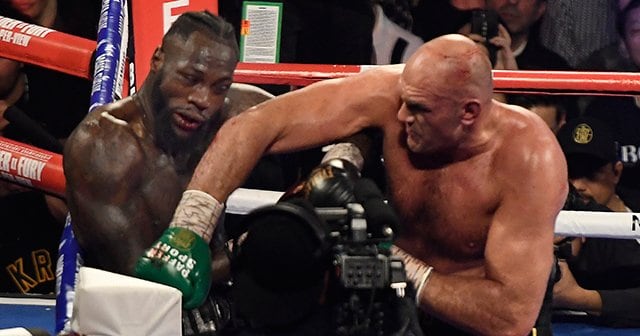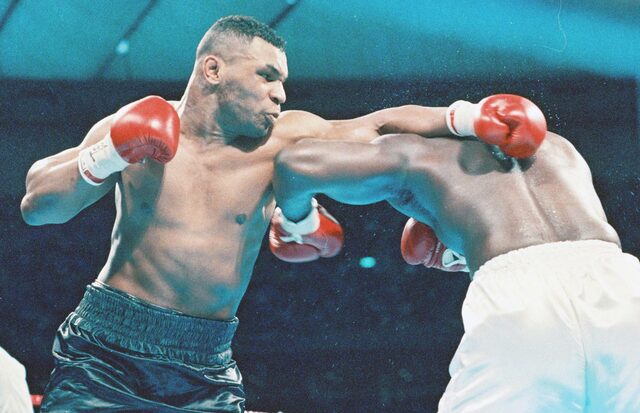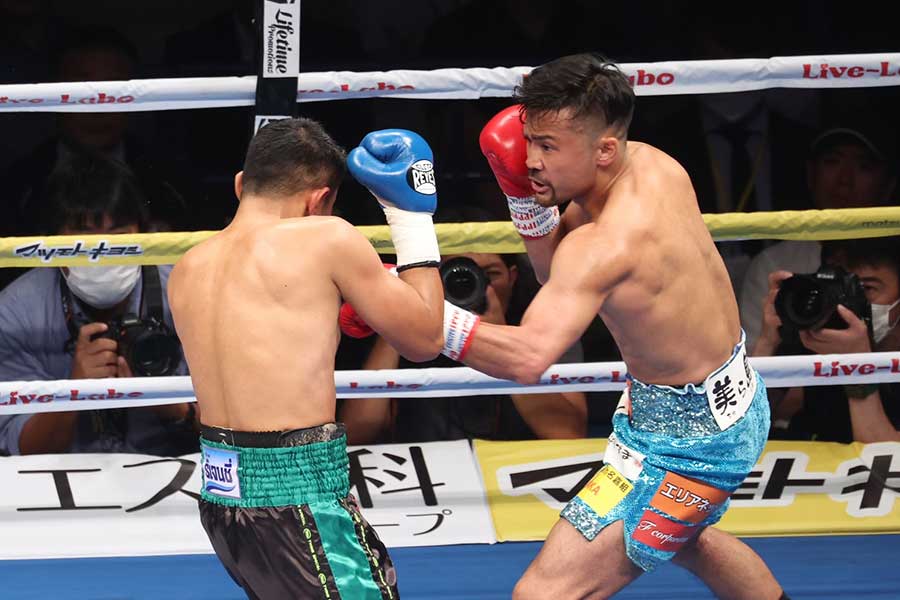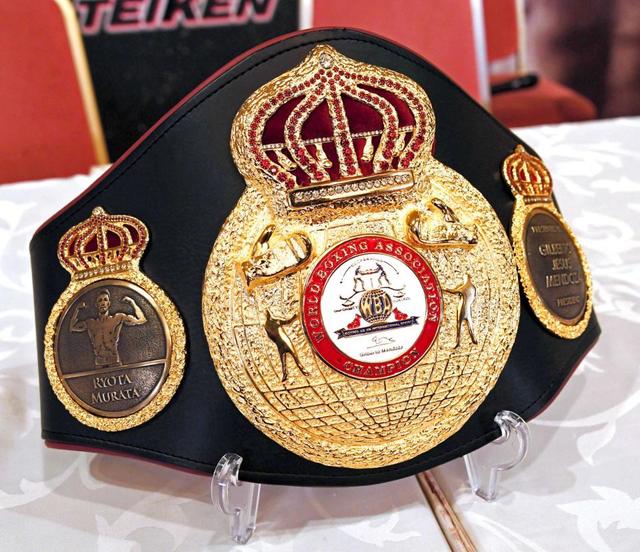
A boxing ring is more than just a place for matches.
It has shaped the history of the sport and produced countless legendary moments.
This article details everything from boxing ring design to safety standards and historical evolution.
Explore how each aspect of the ring supports the game of boxing and how it has shaped boxing as a sport.
We will also delve into the impact the ring has on athletes and spectators, and its role in the future of boxing.
目次
Basic structure of boxing ring
Ring size and shape
The size and shape of a boxing ring may vary depending on the level and scale of the match, but will generally be designed according to international standards.
According to the rules of the International Boxing Federation (AIBA), the ring is square, with a minimum size of 16 feet x 16 feet (approximately 4.9 meters x 4.9 meters) between the ropes, and a maximum size of 20 feet x 20 feet (approximately 6.1 meters x 6 meters). 1 meter).
This ensures that the players can compete with sufficient freedom of movement.
Additionally, the corners of the ring are distinguished by different colors, usually red, blue, and the other two white.
This allows players and spectators to clearly identify their positions.
Ring materials and construction
Carefully selected materials are used in the construction of the boxing ring to ensure durability and safety.
Ring floors are typically foam padded over a wooden base plate for shock absorption, and then covered with canvas or similar non-slip material.
This reduces the risk of players slipping and injuring themselves. The rope is flexible yet has sufficient elasticity, and is usually stretched in four layers.
These ropes are often coated with nylon or synthetic material and have padded corners to withstand high impact.
The design and construction of a boxing ring is important to maximize athlete performance while ensuring maximum safety.
Each component must be of a quality that can withstand the intense movement and impact of a match, and must be rigorously checked according to standards.
These detailed designs and exacting standards ensure that the boxing ring continues to serve as a sporting arena.

Evolution of ring design
historical changes
Boxing ring design has undergone significant evolution throughout its history.
Early boxing rings were simply simple roped areas set on a flat surface of earth.
In the 19th century, the ring developed into a more organized and standardized form, wooden floors were introduced, and the safety of players and spectators became more of a consideration.
In the 20th century, official rules regarding ring size, shape, and safety equipment were set, which set the standard for boxing rings to this day.
A particularly important development was the addition of padding to the corners of the ring, designed to cushion the impact on the players.
latest ring technology
The latest ring design combines technology and innovation to further enhance player performance and safety.
Modern rings use advanced materials that are durable and shock-absorbing, minimizing impact to the player.
In addition, the flooring of the ring is made of a special material that is non-slip and disperses shock.
This allows athletes to move faster and more safely.
In some cases, the introduction of digital technology has made it possible to monitor the condition of the ring in real time and adjust its conditions as necessary.
These technological innovations not only improve the safety of boxing matches, but also increase their appeal as a sport.
These advances indicate that the boxing ring has transformed from a mere venue for matches to a sophisticated sports device that brings out the ultimate in skill and safety for athletes.
Future ring designs will continue to incorporate even more technological innovations and contribute to the development of the sport.
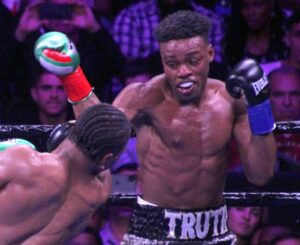
Ring Safety and Regulation
safety standards
Boxing ring safety standards are extremely strict to ensure the safety of athletes, referees, and even spectators.
The design and construction of the ring must follow standards set by international sports federations and local sports regulatory bodies.
This includes the size of the ring, the material used, and the number and thickness of rope surrounding the ring.
For example, the canvas on the ring floor must be non-slip and shock-absorbing, and the ropes must maintain proper tension and height and be covered with safety padding.
These standards are essential to reduce the impact experienced by players and minimize the risk of injury during matches.
regulation and management
Regulation and safety of boxing rings is carried out by international sports organizations and local authorities.
These organizations not only set ring safety standards, but also ensure that they are strictly followed through regular inspections and pre-match checks.
Each component of the ring must be evaluated for compliance with regulations and modified or replaced as necessary.
Training of staff involved in the installation and dismantling of the ring is also an important element, ensuring that it is done in an appropriate manner.
These controls form the basis for the safe operation of sporting events and are essential to the safety of all participants.
The application of these strict safety standards and regulations ensures that the boxing ring is not just an arena, but a safe and fair arena for sport.
Understanding how each regulation is established and enforced is important for each stakeholder surrounding boxing.

Difference between training ring and competition ring
Training ring features
Training rings are primarily designed for players to practice and improve their skills.
These rings are typically made smaller than competition rings and are tailored to accommodate training facilities with limited space.
Additionally, training rings are often kept simple in materials and construction, with an emphasis on durability and cost efficiency.
For example, more common and easily replaceable materials may be used instead of expensive custom materials.
This ensures robustness for everyday use and easy maintenance.
Because training rings are used frequently, they must be able to be repaired and adjusted quickly.
Match ring characteristics
In contrast, match rings are designed strictly according to standards for professional competitive events.
These rings meet international competition standards and special attention is paid to size and material selection to provide an optimal visual experience for spectators and athletes alike.
The floor of the match ring is made with advanced technology to effectively absorb the impact experienced by the players and minimize the risk of injury.
Match rings also typically have unique designs to enhance their visual appeal, often featuring the sponsor’s logo or the event’s theme colors.
These rings are used in front of large audiences, so it is important that they not only comply with safety standards, but also look good.
These differences make training rings and competition rings optimized for their respective uses, contributing to the growth and safety of boxers and the success of their events.
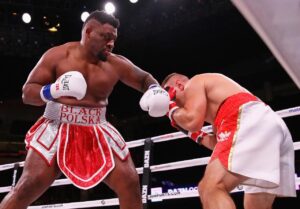
Ring maintenance and lifespan
Importance of maintenance
Boxing ring maintenance is critical to ensuring safe and fair competition.
Rings should be inspected regularly and repairs or adjustments made as necessary.
This includes re-stretching floor canvas, adjusting rope tension, and inspecting and replacing padding.
Proper maintenance is essential not only to enable athletes to perform at their best, but also to minimize the risk of injury.
Additionally, maintaining the appearance of the ring shows the professionalism of the event and creates a positive impression with spectators and the media.
Ring durability and renewal
The lifespan of a boxing ring varies greatly depending on how often it is used and how it is stored.
Typically, professional match rings may require several major updates over a 5 to 10 year period.
This is because the material of the ring deteriorates over time, especially the rope or canvas, which must be replaced periodically.
Particularly thorough inspections are required after major tournaments and events, sometimes requiring the entire ring to be rebuilt.
Preventive maintenance and prompt response are recommended, as continued deterioration not only impacts performance but also poses a risk to player safety.
These maintenance and updating tasks are essential to keeping your boxing ring in top condition.
Ensuring that the ring is in the best conditions at all times is a fundamental element in ensuring the fairness and safety of the sport.

Famous boxing rings and their matches
historic match
The history of boxing includes famous rings where many legendary matches took place.
For example, New York’s Madison Square Garden is known as the “Mecca of Sports” and has hosted many memorable boxing matches, including the 1971 bout between Joe Frazier and Muhammad Ali, known as the “Fight of the Century.” It was done.
This ring is considered a symbolic location not only in boxing, but in sports in general.
The MGM Grand Garden Arena in Las Vegas is also known for hosting recent big fights like Floyd Mayweather vs. Manny Pacquiao.
Memorable events that happened in the ring
A memorable event that took place in a specific ring was the 1986 match between Marvin Hagler and Thomas Hearns at Caesars Palace in Las Vegas.
The bout was billed as the “best of three rounds,” with both fighters exchanging heavy blows in just eight minutes, with Hagler ultimately emerging victorious.
Also, in 1997, Mike Tyson bit Evander Holyfield’s ear, a shocking incident that was widely reported by media around the world.
More than just arenas, these rings have shaped boxing history and left lasting impressions on fans.
Each match is timeless and the drama that unfolds in these rings is remembered as part of the history of the sport.

Frequently asked questions about boxing rings
FAQ
Below are some common questions and answers about boxing rings.
This will give you a deeper understanding of the different aspects of the boxing ring.
Q1: What is the standard size of a boxing ring?
A1: Professional boxing ring sizes generally range from 16′ x 16′ to 24′ x 24′, although 20′ x 20′ is often used. This allows players to develop their tactics while ensuring sufficient space.
Q2: How is the flooring material for the ring selected?
A2: The ring flooring is padded to cushion the impact on the players. Typically, a high-density foam mat is placed on a wooden base and topped with a canvas or vinyl cover.
Q3: What does boxing ring maintenance include?
A3: Ring maintenance includes cleaning the canvas, adjusting rope tension, and repairing or replacing damaged parts. Regular inspection and maintenance is important to maintain the safety and functionality of your ring.
Q4: What are the safety standards for rings?
A4: Boxing ring safety standards are set by the International Boxing Federation (AIBA) and other sports organizations and require ring construction, materials, and safety equipment to comply with these standards. This includes rope quantity and height, corner pad quality, etc.
These FAQs provide answers to common questions about boxing rings and help you better understand how to ensure safety and fairness in the sport.
